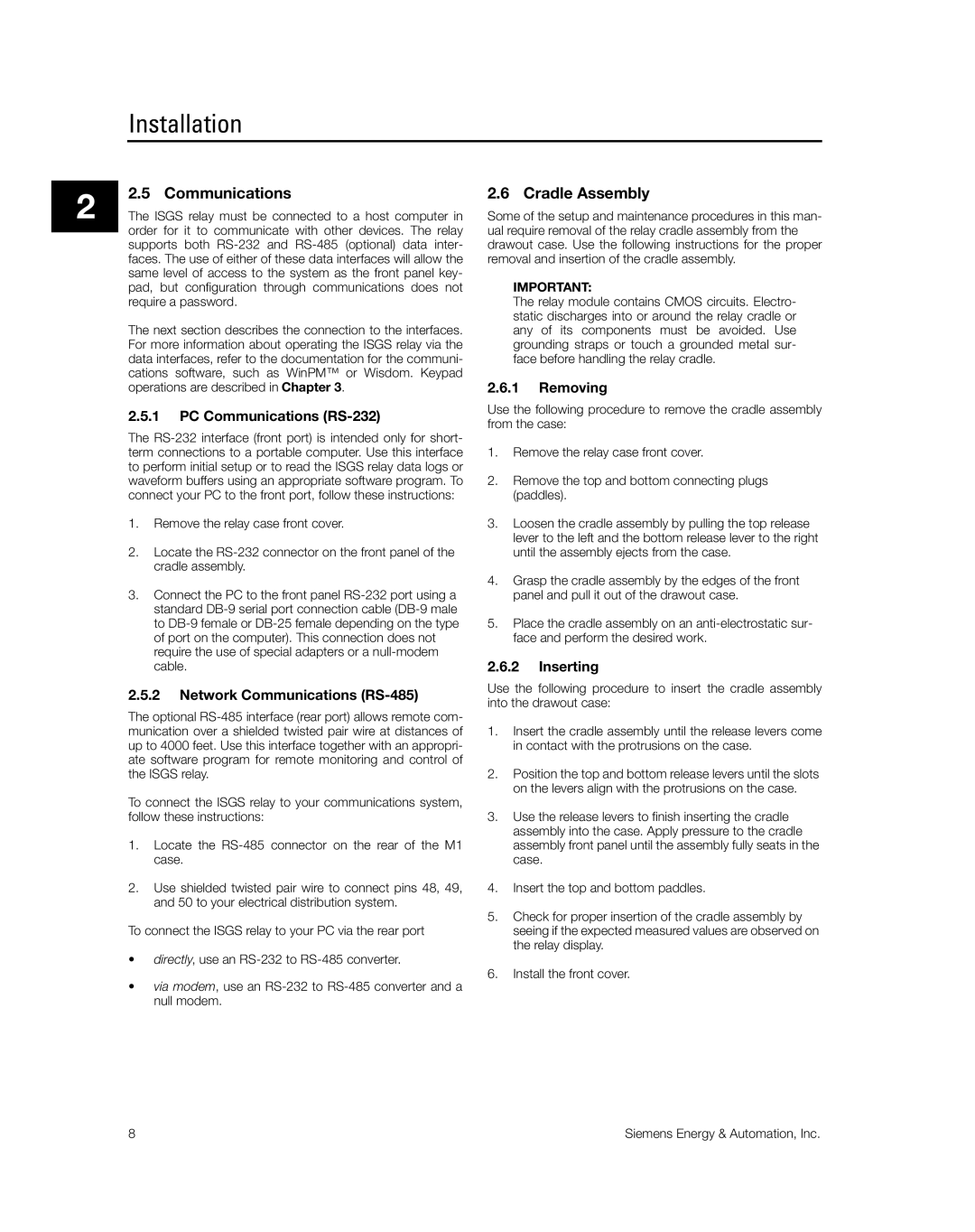
Installation
2
2.5 Communications
The ISGS relay must be connected to a host computer in order for it to communicate with other devices. The relay supports both
The next section describes the connection to the interfaces. For more information about operating the ISGS relay via the data interfaces, refer to the documentation for the communi- cations software, such as WinPM™ or Wisdom. Keypad operations are described in Chapter 3.
2.5.1PC Communications (RS-232)
The
1.Remove the relay case front cover.
2.Locate the
3.Connect the PC to the front panel
2.5.2Network Communications (RS-485)
The optional
To connect the ISGS relay to your communications system, follow these instructions:
1.Locate the
2.Use shielded twisted pair wire to connect pins 48, 49, and 50 to your electrical distribution system.
To connect the ISGS relay to your PC via the rear port
•directly, use an
•via modem, use an
2.6 Cradle Assembly
Some of the setup and maintenance procedures in this man- ual require removal of the relay cradle assembly from the drawout case. Use the following instructions for the proper removal and insertion of the cradle assembly.
IMPORTANT:
The relay module contains CMOS circuits. Electro- static discharges into or around the relay cradle or any of its components must be avoided. Use grounding straps or touch a grounded metal sur- face before handling the relay cradle.
2.6.1Removing
Use the following procedure to remove the cradle assembly from the case:
1.Remove the relay case front cover.
2.Remove the top and bottom connecting plugs (paddles).
3.Loosen the cradle assembly by pulling the top release lever to the left and the bottom release lever to the right until the assembly ejects from the case.
4.Grasp the cradle assembly by the edges of the front panel and pull it out of the drawout case.
5.Place the cradle assembly on an
2.6.2Inserting
Use the following procedure to insert the cradle assembly into the drawout case:
1.Insert the cradle assembly until the release levers come in contact with the protrusions on the case.
2.Position the top and bottom release levers until the slots on the levers align with the protrusions on the case.
3.Use the release levers to finish inserting the cradle assembly into the case. Apply pressure to the cradle assembly front panel until the assembly fully seats in the case.
4.Insert the top and bottom paddles.
5.Check for proper insertion of the cradle assembly by seeing if the expected measured values are observed on the relay display.
6.Install the front cover.
8 | Siemens Energy & Automation, Inc. |
